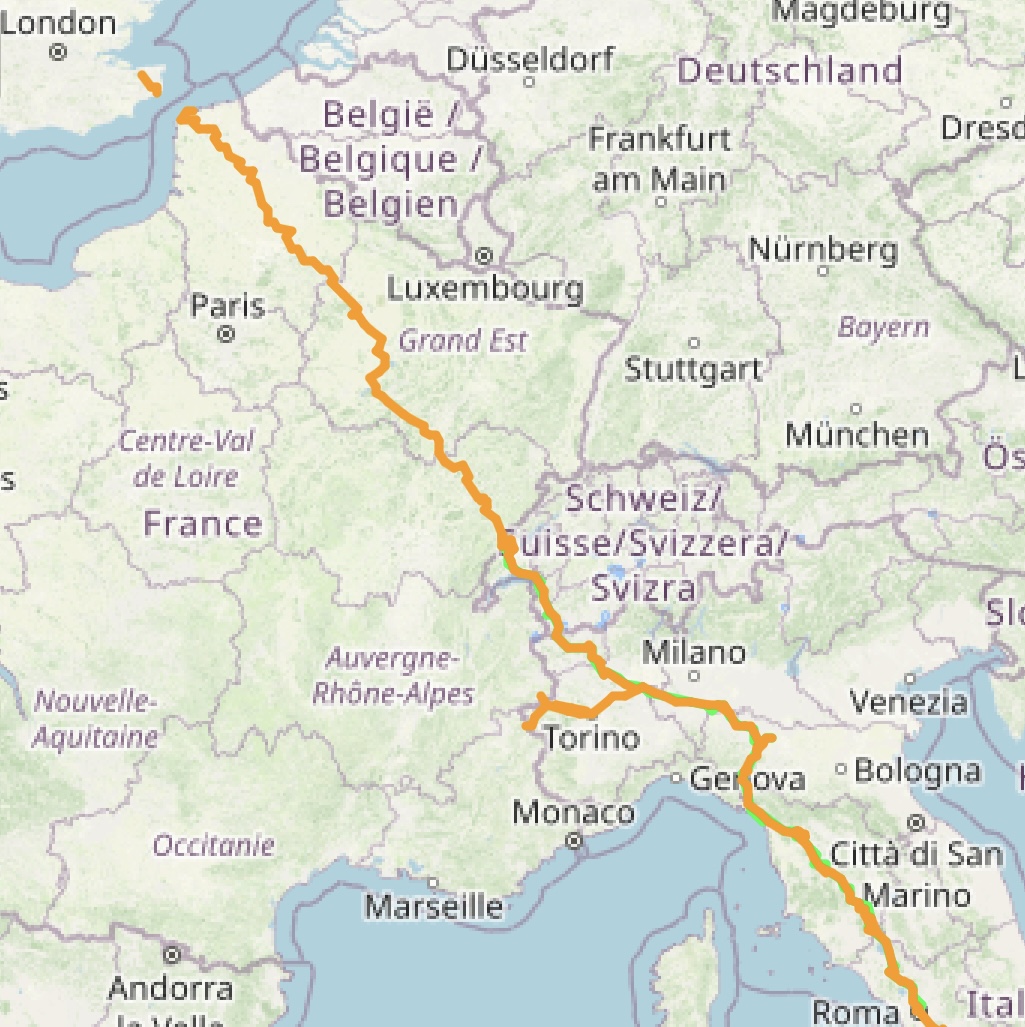On April 10, 2023, we began walking the Via Francigena, from Canterbury to Rome. This ancient pilgrimage route of approximately 2200 kms, which is not a single road, but a collection of several possible routes, is conventionally travelled from Canterbury Cathedral to St Peter’s Basilica in Rome. First documented as the Lombard Way, and later the Iter Francorum, the route was known as the Via Francigena by the 9th century. At the end of the 10th century, Sigeric the Serious, 27th Archbishop of Canterbury, used the route to travel to Rome for his consecration by the Pope. His return journey, recorded by a clerk in a document now housed in the British Library, details the 79 stages or ‘submansiones’ of his itinerary back to Canterbury. It is these 79 stages which define the route as it is known today.
We began walking in Canterbury with the expectation and hope that we might get as far as the St. Bernard Pass in Switzerland before Schengen restrictions would require that we end the walk (as non-EU citizens, we are limited to being in the Schengen area for 90 days in any 180-day period). However, we soon changed our plans. After some interruptions caused by illness and a couple of weeks of walking along muddy paths through northern France in what appears to be a particularly cool wet spring, we decided to head south and walk/travel the Italian section of the VF instead. On April 27, we left Saint-Quentin by train via Paris, Geneva and Turin, arriving in Aosta April 28. Since then, we have been following the VF route by both foot and public transport.
You can follow our progress on our Via Francigena Blog.

